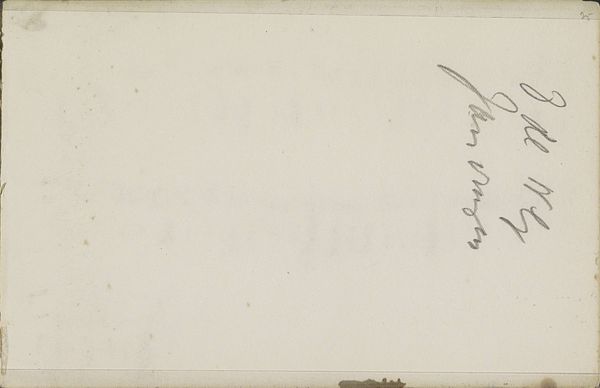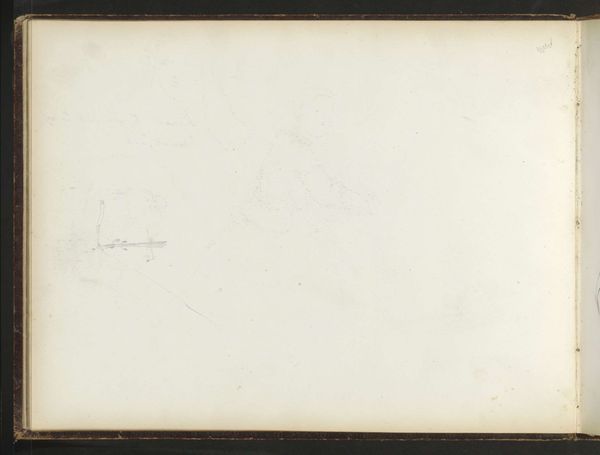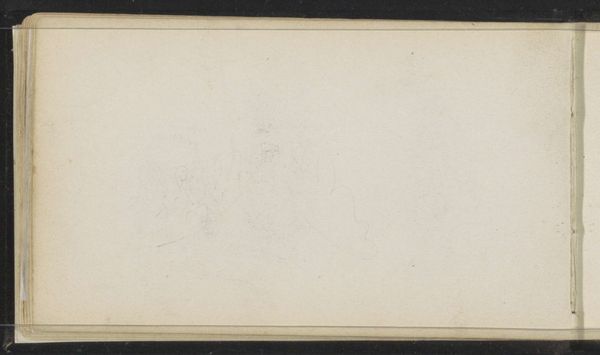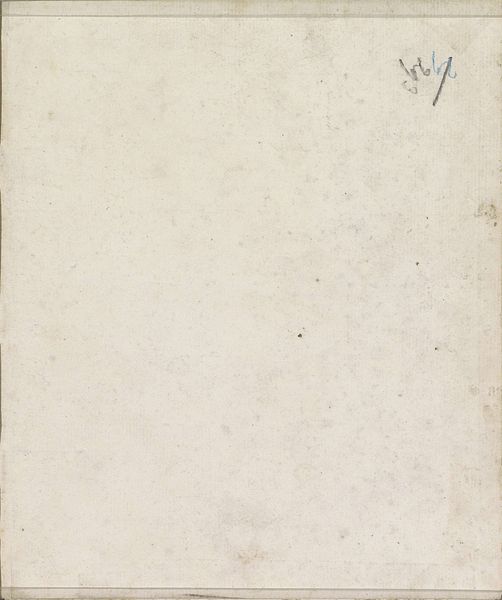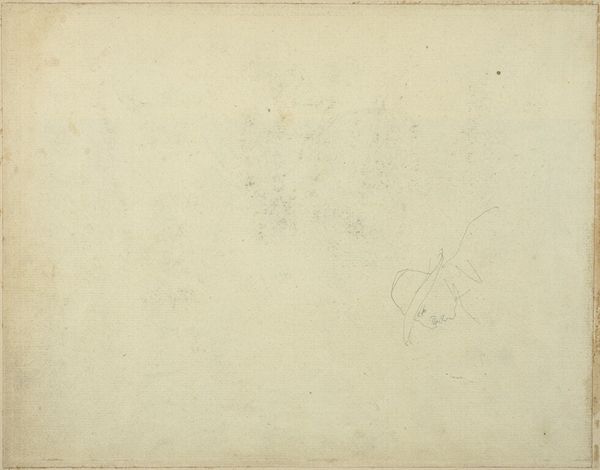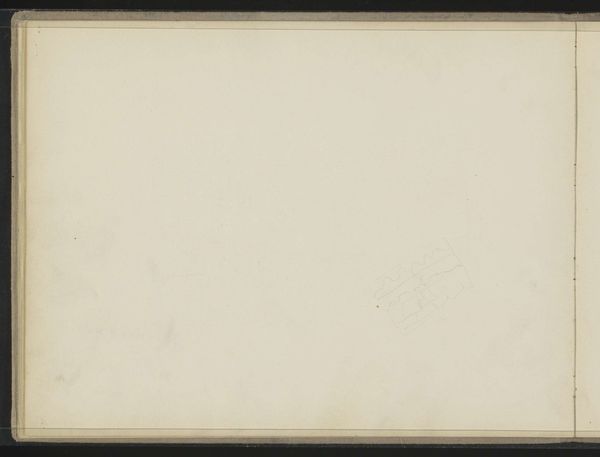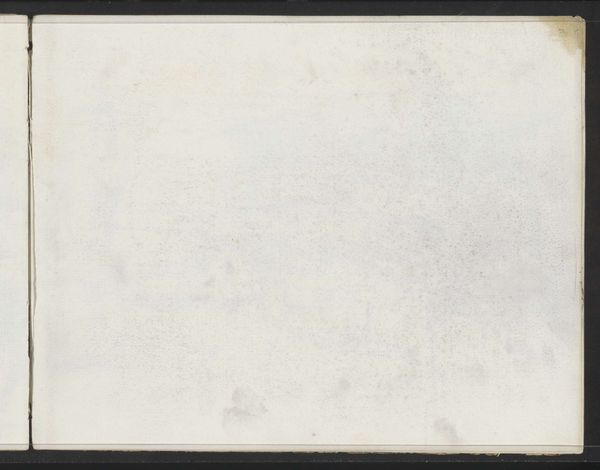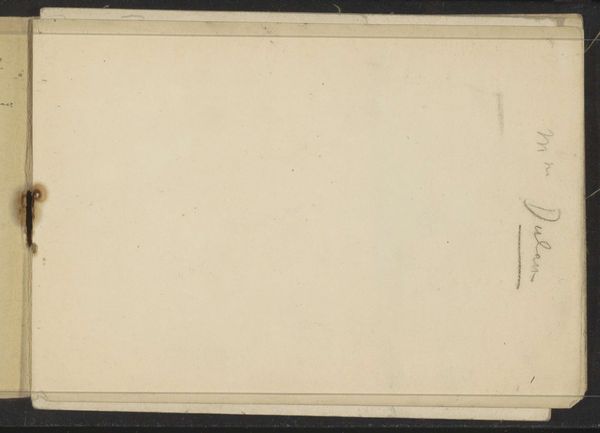
Copyright: Rijks Museum: Open Domain
Editor: Here we have Willem Witsen’s “Hond,” an ink drawing on paper, from around 1897 to 1900. It's... minimal, to say the least! Just a few lines suggesting a dog. How do you interpret such a simple representation? Curator: It’s deceptive, isn't it? Witsen lived during a period of immense social upheaval and changing ideas about class. Dogs often appear in art history as symbols of fidelity, privilege, or hunting prowess – attributes tied to the elite. This rough sketch almost seems to deconstruct those associations. Editor: So, you see this sketch as a commentary on class? That’s fascinating. Curator: Possibly. Or a study of essential forms. Is it portraying a specific breed, or just "dog-ness?" The impressionistic style could suggest a commentary on capturing fleeting moments in a rapidly changing society, right? The elite's grip on power was waning. Could this be a subtle dig? Editor: That's a perspective I hadn't considered! It pushes back against a sentimental reading. But what if it's just... a quick sketch? Curator: Exactly! And even in that apparent simplicity, a political reading might ask whose leisure and resources afforded such "simple" observations? How did social dynamics affect his lens? Editor: It’s incredible how much a few lines can evoke! I am going to look for "dogs in art" now, as source material for artists’ political statements! Curator: Yes, think critically about not just what you see but the socio-political frameworks shaping those visuals, who has a voice, and who does not.
Comments
No comments
Be the first to comment and join the conversation on the ultimate creative platform.

